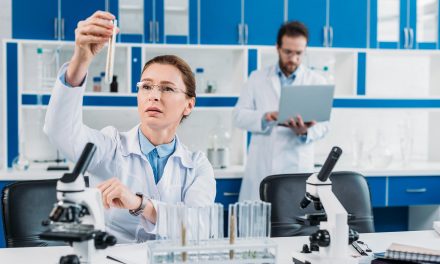The biopharmaceutical industry has come a long way in the last 40 years since the cloning of recombinant DNA was achieved and monoclonal antibodies were invented in 1975 by Cesar Milstein at the MRC, Cambridge, UK.
The market for drugs and therapies from the biopharmaceutical industry will top over $400 billion very soon and this puts a great strain on companies to manufacture and distribute those products that are so much in demand.
One great development that “caught fire” in the last 15 years has been the advent of the single use methodology of manufacturing. This has not only provided less expensive options to produce high-quality clinical material but has also presented other possibilities for full-scale commercial manufacturing, and portable systems for some specialist applications.
With the massive interest in regenerative medicine, which often spawns personalized approaches which in their own rights are small-scale in terms of batch size, adaptable forms of manufacturing like these provide great new opportunities for medical treatment innovations. With the elimination of plant size piping skids and elaborate supporting facility systems, problems frequently connected with system validations and/or equipment cleaning have been exchanged for the challenges of efficient changeover – SMED, and making sure fittings are problem proofed- Poke Yoke.
Gone are many of the complicated transfer panels and steam sterilizable connection arrangements and in their place are flexible connector assemblies and welding apparatus. So, the design of the facility requires quite a bit of rethought for an efficient layout. These should incorporate upfront assembly preparation and production spaces in clean rooms, where multiple pieces of equipment can be reliably laid out and inspected. As in all things GMP, there needs to be a level of predictability about these assemblies to be able to assure consistency.
In future, this will be at least semi-automated to assure reproducibility, lack of assembly errors and ultimately, product quality. Looking at the Future State world of Pharma/Biopharma 4.0, seen from almost any angle, shows that this involves the subject of big data and data analytics, and this is true in the sphere of bioprocessing. Although this is still fundamentally developmental or embryogenic as a driver of the science of bioprocessing, it’s clear that it’s a topic that has massive potential to play a significant role in the production of modern medicines and medical products.
During the last 20 years, real-time processing was seen as something to be prized as a bioprocessing goal, but now areas such as predictive analytic, using AI based upon historical trends, is one area where we can expect a significant leap forward to be made.
Analysis of data sets to predict potential equipment failures (or component failures), would be very significant to maintain the momentum and reliably harnessing single use applications. That together with better methodologies to optimize key process drivers would be a significant step forward.
In raising this as a subject focus, big leaps forward will also come from validated models that enable the development of algorithms that facilitate the optimization of yields for specific manufacturing batches. It will be these algorithms that will bring about the greatest improvements in yields, and project biopharmaceutical manufacturers into a new realm of productivity and efficiency with GMP compliance.





